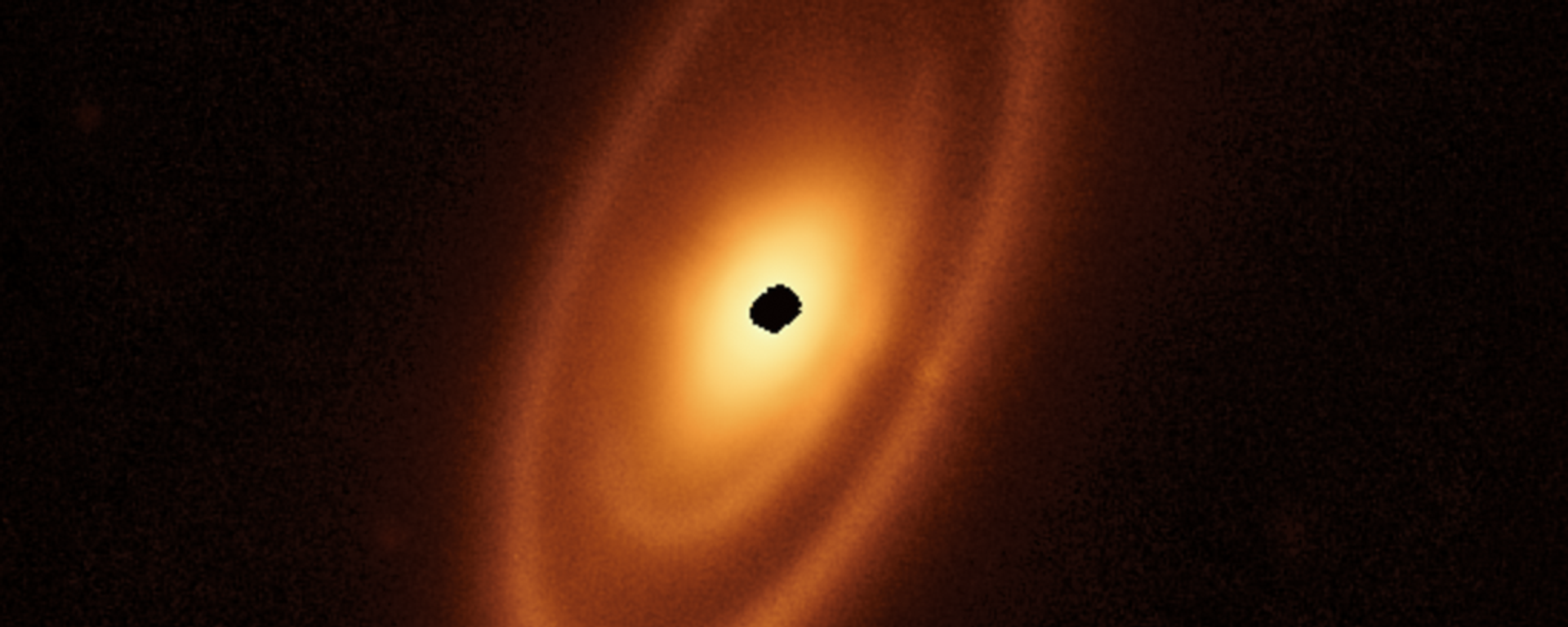https://sputnikglobe.com/20230706/webb-telescope-finds-sign-ancient-galaxies-were-seeded-with-supernova-space-dust-1111698428.html
Webb Telescope Finds Sign Ancient Galaxies Were Seeded With Supernova Space Dust
Webb Telescope Finds Sign Ancient Galaxies Were Seeded With Supernova Space Dust
Sputnik International
In search of the origins of the planets on which life may develop and thrive, some physicists have theorised that they — and we — are literally made from stardust, the remains of massive stars which collapse and then explode.
2023-07-06T16:30+0000
2023-07-06T16:30+0000
2023-07-06T16:30+0000
beyond politics
space
nova
supernova
james webb space telescope
https://cdn1.img.sputnikglobe.com/img/07e6/08/17/1099888502_0:219:1000:782_1920x0_80_0_0_b51b2f75c18a959d05d9444a5e4fd417.jpg
New images from the James Webb Space Telescope have backed a theory that ancient supernovae sowed young galaxies with the seeds of planet birth billions of years ago.A new study published in the British Royal Astronomical Society's monthly journal found large amounts of 'space dust' from two supernova explosions in a distant galaxy photographed by the powerful orbital observatory.The findings back a theory that space dust, thought to be the origin of planets like our own, has its origins in the death throes of huge stars with a mass at least nine times that of our sun.The supernovae, designated SN 2004et and SN 2017eaw, were found in the spiral galaxy NGC 6946 which lies 22 million light years from our solar system.The telescope's infra-red camera made it possible to study their remains, which were not readily detectable in the visible light spectrum as the ejected cloud of dust cools rapidly as it expands."Supernova explosions have been sought for decades as a possible source of dust in the universe, providing the seeds of galaxies, stars, and planetary systems," the study read. "SN 1987A offers one of the most promising examples of significant SN dust formation, but until the [Webb telescope], instruments have traditionally lacked the sensitivity at both late times and longer wavelengths to detect analogous dust reservoirs."NGC 6946 is known as the "fireworks galaxy" for its phenomenally high rate of supernovae. Ten have been observed over the past 100 years, compared to just one in the same time period in our own Milky Way galaxy, which has twice as many stars.The two stars that exploded in those events were an estimated 15 times more massive than our sun. SN 2004et alone may have spewed out as much dust as 5,000 times the mass of the Earth.The findings also highlight the potential of the Webb telescope to detect similar space dust clouds from supernovae in other galaxies. “There’s a growing excitement to understand what this dust also implies about the core of the star that exploded,” said Space Telescope Science Institute program chief Ori Fox. “After looking at these particular findings, I think our fellow researchers are going to be thinking of innovative ways to work with these dusty supernovae in the future.”
https://sputnikglobe.com/20230509/webb-discovers-two-dust-rings-around-young-star-may-provide-clues-of-how-planets-form-1110210105.html
Sputnik International
feedback@sputniknews.com
+74956456601
MIA „Rossiya Segodnya“
2023
James Tweedie
https://cdn1.img.sputnikglobe.com/img/07e4/08/1c/1080307270_0:3:397:400_100x100_80_0_0_7777393b9b18802f2e3c5eaa9cbcc612.png
James Tweedie
https://cdn1.img.sputnikglobe.com/img/07e4/08/1c/1080307270_0:3:397:400_100x100_80_0_0_7777393b9b18802f2e3c5eaa9cbcc612.png
News
en_EN
Sputnik International
feedback@sputniknews.com
+74956456601
MIA „Rossiya Segodnya“
Sputnik International
feedback@sputniknews.com
+74956456601
MIA „Rossiya Segodnya“
James Tweedie
https://cdn1.img.sputnikglobe.com/img/07e4/08/1c/1080307270_0:3:397:400_100x100_80_0_0_7777393b9b18802f2e3c5eaa9cbcc612.png
james webb space telescope, observations of ancient supernovae in distant galaxies, are planets like earth formed from space dust from supernova explosions?
james webb space telescope, observations of ancient supernovae in distant galaxies, are planets like earth formed from space dust from supernova explosions?
Webb Telescope Finds Sign Ancient Galaxies Were Seeded With Supernova Space Dust
In search of the origins of the planets on which life may develop and thrive, some physicists have theorised that they — and we — are literally made from stardust, the remains of massive stars which collapse and then explode.
New images from the
James Webb Space Telescope have backed a theory that ancient supernovae sowed young galaxies with the seeds of planet birth billions of years ago.
A new study published in the British Royal Astronomical Society's
monthly journal found large amounts of
'space dust' from two supernova explosions in a distant galaxy photographed by the powerful orbital observatory.
The findings back a theory that space dust, thought to be the origin of planets like our own, has its origins in the death throes of huge stars with a mass at least nine times that of our sun.
“Direct evidence of this phenomenon has been slim up to this point, with our capabilities only allowing us to study the dust population in one relatively nearby supernova to date — Supernova 1987A, 170,000 light-years away from Earth,” explained lead study author Melissa Shahbandeh from Johns Hopkins University in Baltimore.
The
supernovae, designated SN 2004et and SN 2017eaw, were found in the spiral galaxy NGC 6946 which lies 22 million light years from our solar system.
The telescope's infra-red camera made it possible to study their remains, which were not readily detectable in the visible light spectrum as the ejected cloud of dust cools rapidly as it expands.
"Supernova explosions have been sought for decades as a possible source of dust in the universe, providing the seeds of galaxies, stars, and planetary systems," the study read. "SN 1987A offers one of the most promising examples of significant SN dust formation, but until the [Webb telescope], instruments have traditionally lacked the sensitivity at both late times and longer wavelengths to detect analogous dust reservoirs."
NGC 6946 is known as the "fireworks galaxy" for its phenomenally high rate of supernovae. Ten have been observed over the past 100 years, compared to just one in the same time period in our own Milky Way galaxy, which has twice as many stars.
The two stars that exploded in those events were an estimated 15 times more massive than our sun. SN 2004et alone may have spewed out as much dust as 5,000 times the mass of the Earth.
That estimate raises "the prospect of supernovae as potential significant sources of dust in the universe," the study's authors wrote.
The findings also highlight the potential of the Webb telescope to detect similar space dust clouds from supernovae in other galaxies.
“There’s a growing excitement to understand what this dust also implies about the core of the star that exploded,” said Space Telescope Science Institute program chief Ori Fox. “After looking at these particular findings, I think our fellow researchers are going to be thinking of innovative ways to work with these dusty supernovae in the future.”




